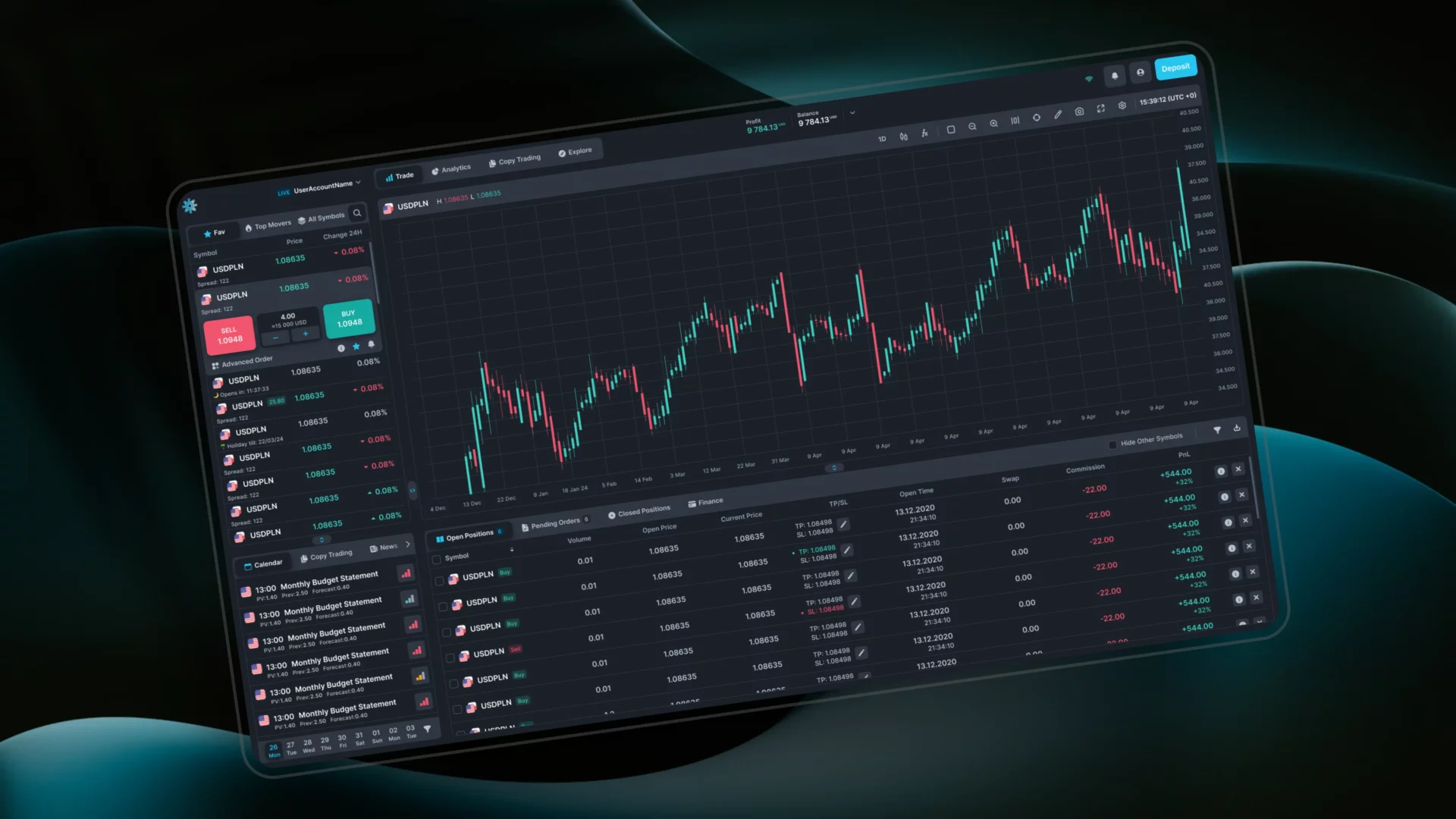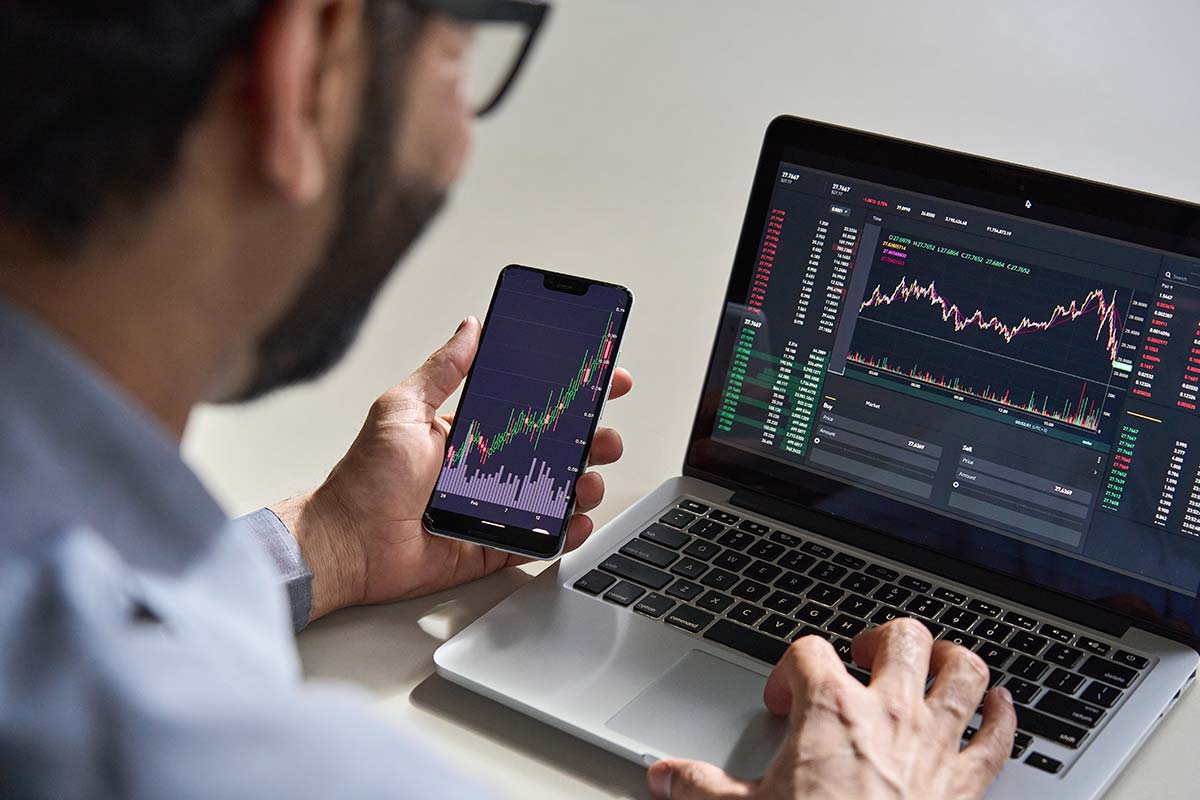Wyckoff Accumulation: What You Need to Know
Written by Emma on June 6, 2024.If there’s one skill you need as a day trader, it’s knowing precisely when to buy and sell assets to maximize profits. In other words, rather than letting emotions cloud your judgment, you need rules to follow to guide your actions.
What’s one trading strategy which can help? It’s the Wyckoff method; or, more specifically, Wyckoff accumulation patterns.
But what is the accumulation phase in the Wyckoff cycle? And how is it relevant for day traders? Let’s take a look.
What Is the Wyckoff Method?
The Wyckoff method, developed by Richard Wyckoff, is a form of technical analysis. It’s based on supply and demand, or the relationship between buyers and sellers.
The core idea is that supply and demand dynamics are responsible for driving price changes. So, to buy and sell profitably, you need to understand supply and demand dynamics.
In simple terms, the Wyckoff method uses recognized price trends to predict market activity. Wyckoff believed that, although no price trend ever repeats itself, there’s always a distinctive pattern we can follow.
This pattern has four stages: accumulation, markup, distribution, and markdown. Once you know how to read these patterns, you can determine when it’s best to buy or sell an asset. We’ll break these stages down below.
Wyckoff’s Market Rules
The Wyckoff method establishes three simple rules:
- Prices have three directions: up, down, and flat.
- There’s no such thing as random price movements. Every price action can be traced back to previous behavior.
- Context is everything. You can only understand the significance of a pattern by comparing it to past trends.
These rules – or observations – form the basis of the Wyckoff market cycle.
Wyckoff’s Stages of the Market Cycle
Wyckoff’s four market cycle stages are:
- Accumulation: The initial stage, when investors begin building their buying positions.
- Markup: As buyers gain power, prices rise. Depending on the accumulation phase, prices might breakout and fall above the current resistance level.
- Distribution: Eventually, we stop seeing new “highs”. Investors begin “distributing” their current positions.
- Markdown: Finally, prices trend downwards as demand shrinks for a particular asset. This signals the end of a current cycle.
Let’s take a closer look at Wyckoff accumulation and why it’s the most crucial stage in the cycle.
What Is Wyckoff Accumulation?
As mentioned, accumulation is stage one in the Wyckoff market cycle. It heralds the start of a new trading pattern, or trading range.
During this critical stage:
- Professional “smart money” institutional investors control the price direction. They accumulate investments at favorable prices by buying from “weaker” market participants.
- At this point, though, the market is still relatively stable. Buying interest absorbs selling pressure fairly equally. We don’t see any immediate remarkable shifts.
- Trading volume may then rise slowly as buyers take control of the overall market. The larger market takes notice of a potential shift, and traders prepare to take advantage of an upward move.
Think of the accumulation phase as a signpost. If you know what patterns to look for, the accumulation phase represents possible profitable trading opportunities.
For example, a mismatch between asset price and volume can signal a trend change. A Wyckoff accumulation example could make this clearer.
Let’s consider a potential mismatch between asset price and volume. Based on the Wyckoff patterns, this could signal a trend change.
- First, there’s a flurry of market activity. There are many narrow-range, high-volume price bars.
- The price, however, fails to reach a new high. This could signal a potential downward trend.
The more you study accumulation, distribution, and Wyckoff patterns, the easier such trends will be to spot.
Before we move on, here are two points to bear in mind.
- Accumulating stocks have the potential to rise in price to meet market demand. This is the point when traders may wish to buy an asset.
- As assets trend towards the distribution phase, this is a signal to consolidate your position and consider selling.

Wyckoff Accumulation Pattern
How can day traders identify a possible accumulation pattern? While no two patterns are identical, here are signs to watch out for.
- A decline in overall volume suggests lower selling pressure. This could mark the start of an accumulation phase.
- You may notice prices moving sideways or even downwards. This happens as smart money buys from weaker links in the market e.g. retail investors.
- Typically, you’ll notice decreased market volatility, too. Everything appears rather stable – almost like the calm before a flurry of activity.
- If you’re reading chart patterns, you might see what looks like a “compressed spring” appearing. This suggests we’re on track for a breakout – or the markup phase.
When you’re buying assets, buy just as you’re on the cusp of an accumulation moving into the markup phase. This is when prices are most favorable.
Can Day Traders Use the Wyckoff Method?
Sure! You can use Wyckoff accumulation schematics across any timeframe.
For one thing, Wyckoff patterns are easy to recognize once you know what to look for. This makes it ideal when you are day trading and making quick trades. However, market “noise” or fluctuations can make it harder for traders to use Wyckoff patterns effectively in shorter timeframes.
Should you use Wyckoff accumulation patterns in day trading? It’s a personal choice. Ultimately, the Wyckoff method is a trading concept, like any other.
Sure, it’s a guiding technique and a key contribution to technical analysis. But just like any other trading strategy, it’s all about how you use it.
The key takeaway for day traders? Understand how Wyckoff accumulation works and how to exploit its possibilities. Experiment with the Wyckoff market cycle and determine if it works for your trading personality.
Wyckoff Method Pros and Cons
We’ve explored the Wyckoff market cycle and how Wyckoff accumulation works. Let’s summarize the key points and some final pros and cons.
- The Wyckoff method helps traders and investors decide when to buy and sell stocks.
- The Wyckoff “accumulation” phase marks the beginning of a new cycle.
- For day traders on short time frames, the accumulation phase is a key element to identify.
- As it’s such a technical approach, the Wyckoff method relies less on emotion and more on strategy and knowledge. It can help traders make less risky, better-informed trades.
- On the downside, it’s a hard technique to learn. Newer investors may feel intimidated trying to accurately spot these market trends in short time frames.
Is Wyckoff for you? When you join Maven Trading, you’ll have access to ongoing support from our team and community. We’ll help you understand how to make trades with less risk – and how to find the right trading strategy.
Start Your Trading Journey
Once you understand the basics, it’s time to take your trading skills to the next level. That’s where Maven Trading can help.
We welcome promising day traders to start their trading journey with us. In exchange for access to capital, you’ll receive a simulated funded account. And you can keep most of your simulated profits. We only require a small percentage in exchange for using our funds!
Hone your trading strategies and reach your potential with Maven Trading. Choose your journey today. Or contact us to learn more about prop firm trading!



